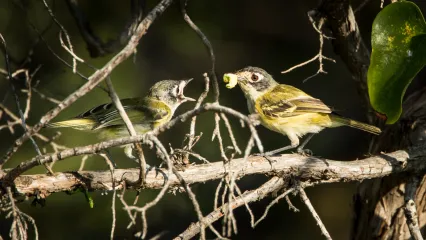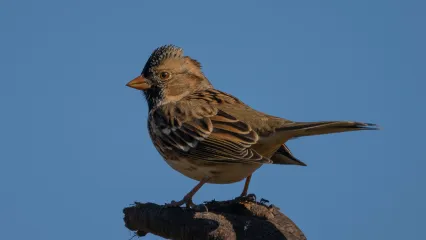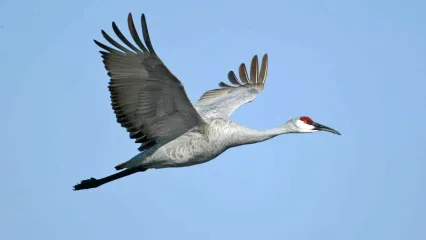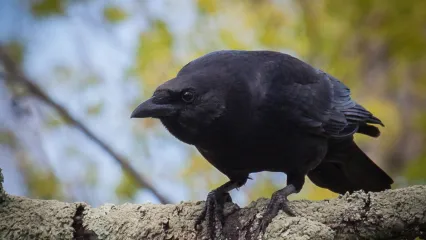
Description
The black-capped vireo has a greenish back, wings and sides. Mature males have a distinctive black cap that covers nearly the entire head except for around the eyes, lores, and throat; the head of the female is a more subdued gray color. The breast and belly are white.
Size
Approximately 5 inches in length.
Habitat
Black-capped vireos require low, brushy, scattered thickets of deciduous trees, especially blackjack oak, for nesting and foraging. Such habitat is mostly found in the southwest corner of the state and was historically maintained with periodic fire and drought. Currently, there are only two known populations of black-capped vireos in Oklahoma. The largest occurs in the Wichita Mountains in Comanche and Kiowa counties. The other population is small (less than 25 birds) and occurs in the canyon lands of northern Blaine County north of Watonga. Historically, this species occurred in multiple, scattered populations throughout the Cross Timbers ecoregion of central and western Oklahoma.
Life Cycle
This species is migratory, spending spring and summer in parts of Oklahoma and Texas and overwintering in Mexico. Vireos typically arrive in Oklahoma in mid-April and depart south in mid-September. Eggs are laid within a small hanging nest, usually constructed at the end of a branch only 4-8 feet above the ground in a short and scrubby tree. Most pairs of vireos raise one brood of chicks per year, although a small percentage may rear two broods. Having very high site fidelity, males often return to the same general territory that was occupied the previous year. Black-capped vireos feed primarily on soft-bodied insects that are removed from leaves and twigs.
The loss and modification of nesting habitat is the primary driver in black-capped vireo decline. Much of their oak and scrub habitat has been cleared and converted to cropland or non-native pastureland. Where native habitat remains, fire suppression has altered the landscape, leading to the encroachment of plants like eastern red cedar. Such changes have also allowed the spread of the brown-headed cowbird, a species that lays its eggs in the nests of other songbirds. The cowbird chicks hatch sooner than the vireos and are larger in size and outcompete the vireo chicks for food. Eventually, the vireo chicks starve or are physically forced out of the nest. When the black-capped vireo was federally listed in 1987, Oklahoma’s population was estimated at around 50 pairs. As of 2016, the Oklahoma population is thought to be approximately 4,000 pairs. The U.S. Fish and Wildlife Service delisted the species in 2018 due to recovery. The primary reason for this rebound is active management, especially on the Wichita Mountains National Wildlife Refuge and Ft. Sill Army Base. USFWS Refuge personnel have implemented a rigorous prescribed fire program and trap and remove brown-headed cowbirds on an annual basis. Since the late 1980s, the Wildlife Diversity Program has used ESA Section 6 funding with the University of Central Oklahoma to better define the vireo’s status and distribution in the state. Although a large and stable population now occurs on the Wichita Mountains Wildlife Refuge, small populations still persist on private lands in Blaine and Kiowa counties. The Wildlife Diversity Program will continue to support management activities for the black-capped vireo on private lands in future years.


